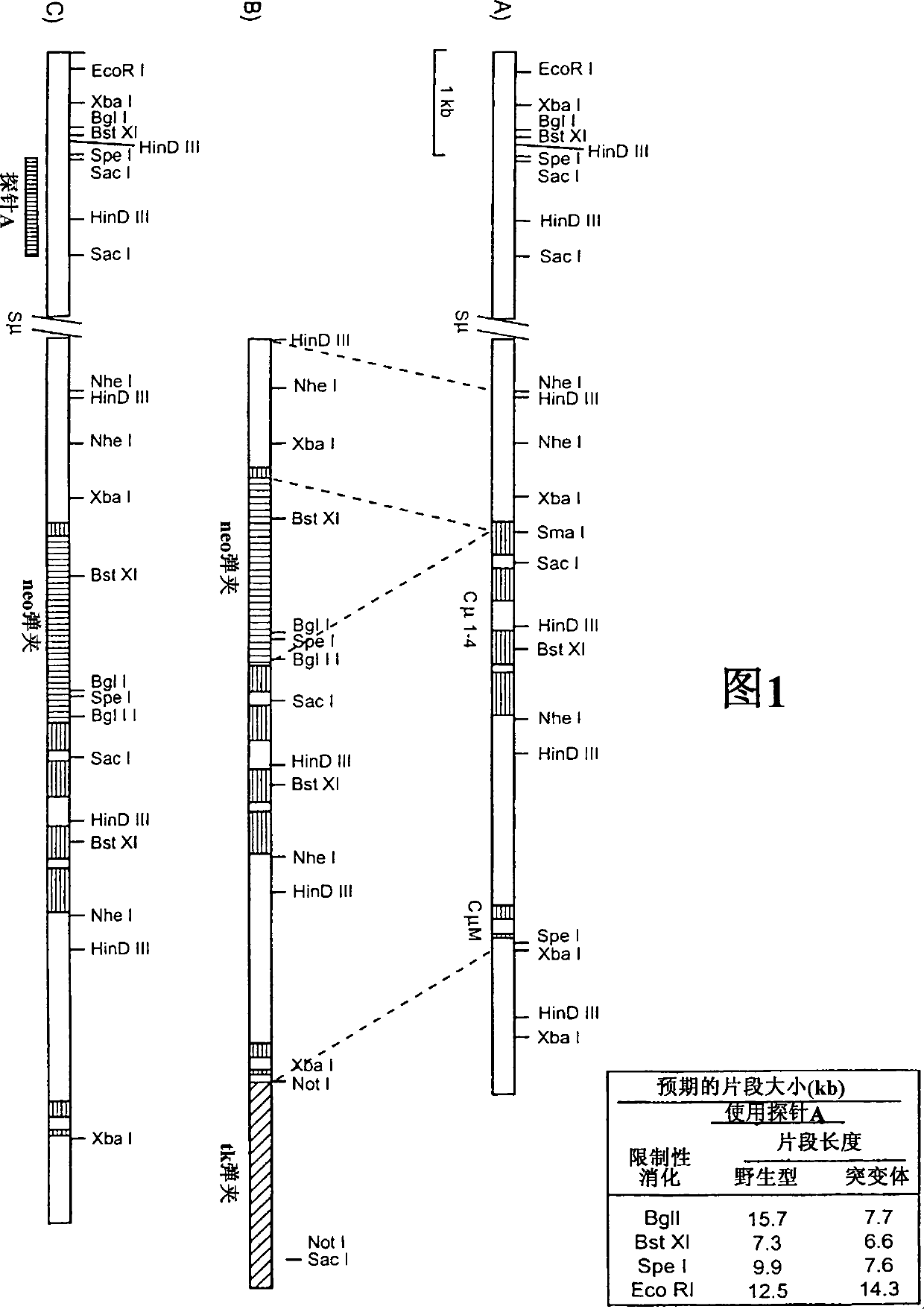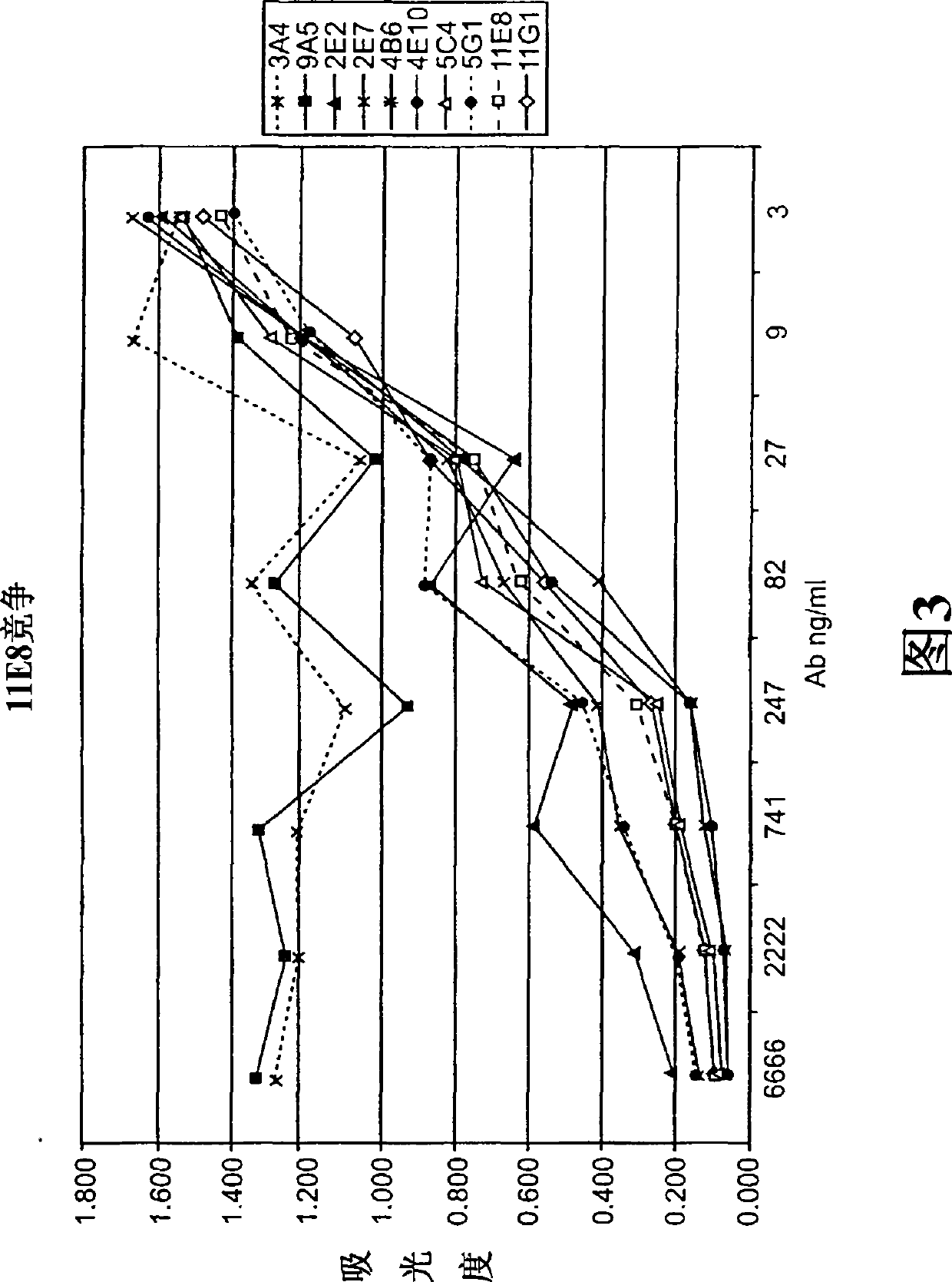Human CTLA-4 antibodies and their uses
An antibody and antigen technology, applied in the field of molecular immunology and the treatment of human diseases, which can solve problems such as incomplete understanding of the nature of molecules
- Summary
- Abstract
- Description
- Claims
- Application Information
AI Technical Summary
Problems solved by technology
Method used
Image
Examples
preparation example Construction
[0184] The production of bispecific and multispecific molecules of the invention can use chemical techniques (see e.g. Kranz (1981) Proc. Natl. Acad. Sci. USA 78:5807), "polydoma" technology (see e.g. DNA technology. The bispecific and multispecific molecules of the invention can also be prepared by linking the binding specificity moieties of the components, such as anti-FcR and anti-human CTLA-4 binding specificity moieties, using methods known in the art and as described herein. method described. For example, the binding specificities of each bispecific and multispecific molecule can be generated individually and then linked to each other. When the specific moieties to be bound are proteins or peptides, various coupling or cross-linking agents can be used for covalent attachment. Examples of crosslinkers include protein A, carbodiimide, N-succinimidyl-S-acetyl-thioacetate (SATA), N-succinimidyl-3-(2-pyridine dithio)propionate (SPDP), and sulfosuccinimidyl-4-(N-maleimidome...
Embodiment 1
[0273] Example 1 Generation of Cmu-targeted mice
[0274] Construction of CMD targeting vector
[0275] Plasmid pICEmu contains the EcoRI / XhoI fragment of the murine Ig heavy chain locus spanning the mu gene obtained from the Balb / C genomic lambda phage library (Marcu et al., Cell 22:187, 1980). This genomic fragment was subcloned into the XhoI / EcoRI site in plasmid pICEMI9H (Marsh et al., Gene 32:481-485, 1984). The heavy chain sequence included in the plasmid pICEmu extends from an EcoRI site just downstream of the 3' end of the mu intronic enhancer to an XhoI site approximately 1 kb downstream of the last transmembrane exon of the mu gene; but passage in E.coli Many mu-transition repeat regions have been deleted during the process.
[0276] Targeting vectors were constructed as follows (see figure 1): A 1.3 kb HindIII / SmaI fragment was excised from plasmid pICEmu and subcloned into HindIII / SmaI digested plasmid pBluescript (Stratagene, LaJolla, CA). This plasmid pICEmu ...
Embodiment 2
[0286] Example 2. Generation of HCo12 transgenic mice
[0287] HCo12 human heavy chain transgene
[0288] The HCo12 transgene was generated by co-injection of the 80 kb insert of pHC2 (Taylor et al., 1994, Int. Immunol., 6:579-591) and the 25 kb insert of pVx6. Plasmid pVx6 was constructed as described below.
[0289] An 8.5 kb HindIII / SalI DNA fragment, including the germline human VH1-18 (DP-14) gene together with approximately 2.5 kb of 5' flanking genomic sequence and 5 kb of 3' flanking genomic sequence, was subcloned into plasmid vector pSP72 (Promega, Madison , WI) to generate plasmid p343.7.16. The 7 kb BamHI / HindIII DNA fragment, including the germline human VH5-51 (DP-73) gene together with approximately 5 kb of 5' flanking genomic sequence and 1 kb of 3' flanking genomic sequence, was cloned into Plasmid p251f was generated based on the pBR322 base plasmid cloning vector pGPIf (Taylor et al., 1992, Nucleic Acids Res. 20: 6287-6295). New cloning vector derived fro...
PUM
 Login to View More
Login to View More Abstract
Description
Claims
Application Information
 Login to View More
Login to View More - R&D
- Intellectual Property
- Life Sciences
- Materials
- Tech Scout
- Unparalleled Data Quality
- Higher Quality Content
- 60% Fewer Hallucinations
Browse by: Latest US Patents, China's latest patents, Technical Efficacy Thesaurus, Application Domain, Technology Topic, Popular Technical Reports.
© 2025 PatSnap. All rights reserved.Legal|Privacy policy|Modern Slavery Act Transparency Statement|Sitemap|About US| Contact US: help@patsnap.com



